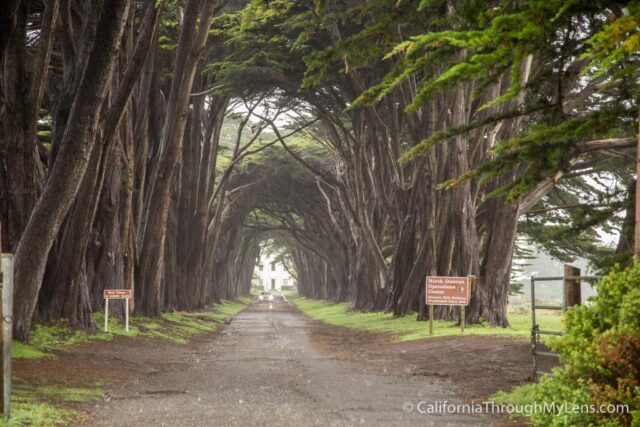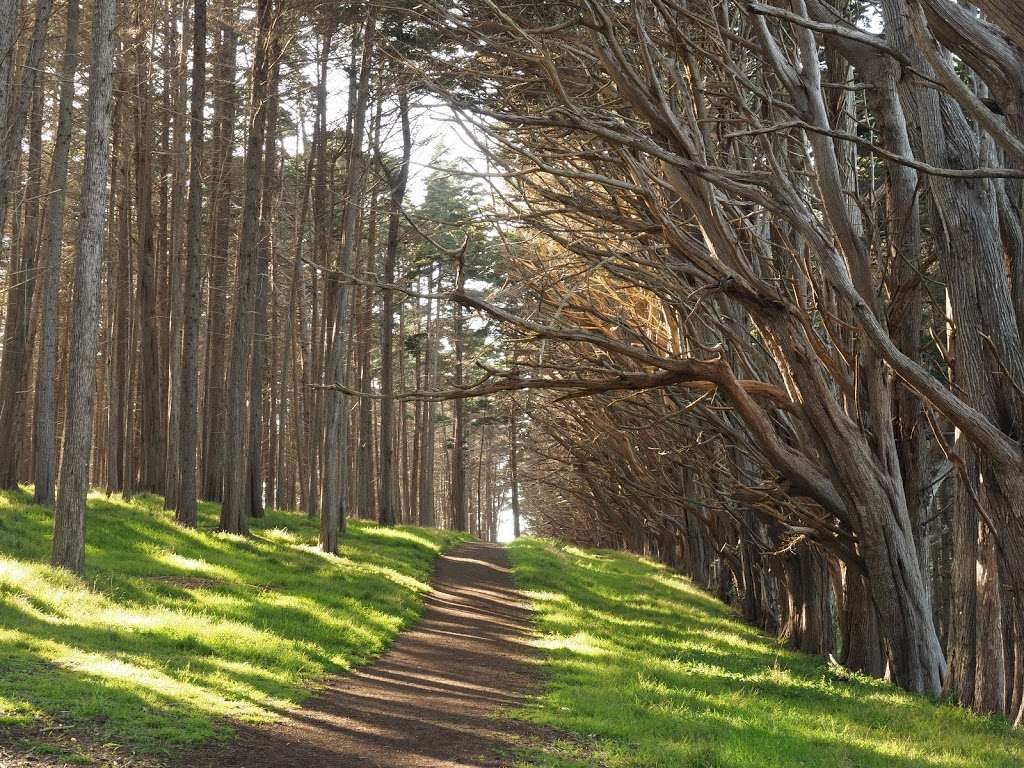

At least one alligator reportedly resides in the large pond, which is usually covered with a layer of duckweeds which are small aquatic flowering plants.Įv-Henwood is open from dawn to dusk, seven days a week, free to the public.įor more information, visit. The ponds are man-made and both were developed in low areas prior to acquisition of Ev-Henwood by UNCW in 1991. The fields are maintained to provide habitat for birds and other wildlife. The lowlands along the blackwater Town Creek and its branches have a canopy of various combinations of bald cypress, black gum, tulip tree, red maple, swamp chestnut oak and other floodplain species. The tunnel is surrounded by lush green grass and a picturesque landscape. It is a long row of cypress trees with drooping branches that form a tunnel-like path. The woods are dominated by oaks and hickories, with loblolly pines. The Cypress Tree Tunnel is a famous and beautiful location in the Point Reyes National Seashore, California. The trails are comprised of several trails with plant identification labels and learning stations which interpret and explain some of the natural features of Ev-Henwood.

One of the many benefits of cypress trees is that they have lifelong value because if you want to take them down, they are helpful for projects like cabinetry, flooring, making doors, and more.There are two self-guided learning trails, the David Sieren Learning Trail and the Troy Henry Learning Trail. They can bring a bit of curb appeal to your land as well. Some cypress trees don’t do well in the cold.Ĭypress trees are incredibly useful for borders on your property for privacy or blocking the wind. Also, if you purchase any seeds, ensure the climate zone you live in will favor the tree. Research the one you want to plant on your property. Remember that all cypress trees may need different watering, planting, and other caring needs. With such a variety of cypress trees, you can find the perfect one. This cypress can grow in water up to 2 feet deep. The tree typically has a conical-shaped crown and can grow 60 to 90 feet tall with a trunk of up to 3 feet in diameter. The Chinese cypress tree, also known as the Chinese swamp cypress, is found in North America and Europe but is most commonly found in Southeast China. Chinese Cypress Tree Image Credit: Peter Turner Photography, Shutterstock The Nootka cypress grows best in warmer climates and is ideal year-round.ġ2. These trees are great to have for privacy because of their weeping effect. It grows 20 to 30 feet tall and 8 to 12 feet wide. The Nootka cypress tree is a coniferous tree in the family Cupressaceae. Nootka Cypress Tree Image Credit: Peter Turner Photography, Shutterstock This tree is commonly used as a fence in colder climates because of its ability to grow fast and withstand cold temperatures.ġ1. The branches of these trees often droop over the side due to their long lifespan and weight. Mediterranean cypress trees grow fast and have a lifespan of between 50 and 150 years. These trees are mostly evergreen, with large, dark green leaves and a long, slender gray-black trunk. Mediterranean cypress trees are plentiful in the Mediterranean Basin and grow best on dry, sandy soil. Mediterranean Cypress Tree Image Credit: Tama66, Pixabay Related Read: 19 Free DIY Lemonade Stand Plans You Can Build Todayħ. Lemon cypress trees are low-lying and have a beautiful green coloration when they mature. They’re typically found along rivers and wetlands since their roots can tolerate being wet for long periods of time. Lemon cypresses were initially imported from the Mediterranean region, where they grow in shallow and damp soil. Lemon Cypress Tree Image Credit: Kristi Blokhin, Shutterstock The Blue cypress tree has a very slow growth rate and is quite hardy.Ħ. The Blue cypress is also very common in the Southwestern United States and Northern Mexico. It’s a famous landscaping tree for residential and commercial areas. Blue Cypress Tree Image Credit: Cherdchai Chaivimol, Shutterstockīlue cypress trees get their name from the bluish-green color of their leaves.

The 12 Different Types of Cypress Trees 1. Are you curious to learn more about the fantastic and valuable tree? Read on! In this article, we will go into detail about the 12 types of cypress trees.

They are also used for landscaping and help create a natural wind barrier in open spaces.Īs with most types of trees, there is no single variety of cypress trees. Since cypress trees are water damage resistant, they are valued for their wood quality and are frequently used for furniture and building materials. Cypress trees are native to North America in temperate regions, and they are deciduous conifers with straight trunks that stand out because of their longevity, size, and resistance to water rot.


 0 kommentar(er)
0 kommentar(er)
